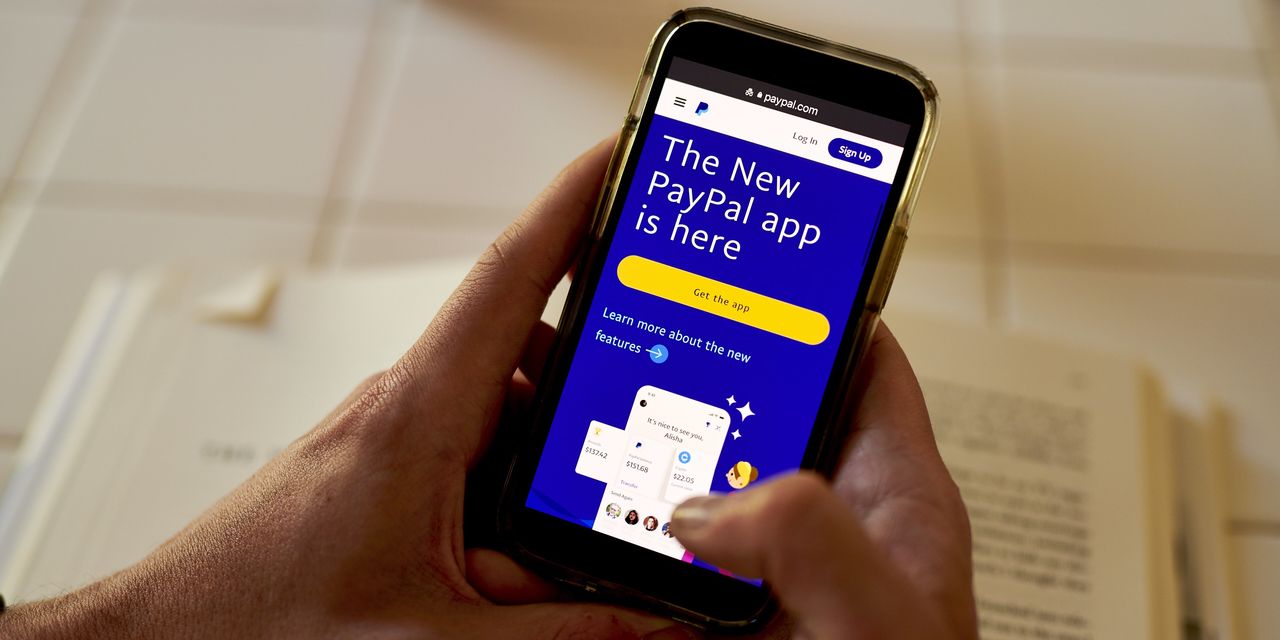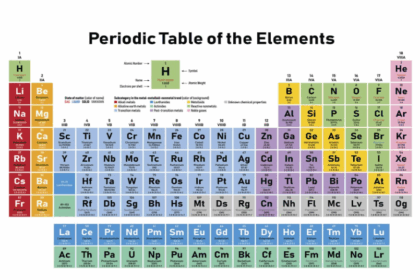
The question of who is likely to spend even faster in the near future—and who might not be—is roiling payments stocks.
Shares of PayPal PYPL -24.59% are plunging after the company lowered its expected pace of revenue growth in 2022, as well as its aspiration for user growth. It cited things such as the effects of supply-chain disruption on cross-border spending, and inflation on consumer sentiment and personal consumption—particularly among its lower-income users. It also noted that some of the newly added customers during the pandemic weren’t contributing much in the way of revenue, just making one transaction when encouraged to do so and then going dormant.
PayPal is still expecting 15%-to-17% revenue growth for this year, alongside 19%-to-22% total payment-volume growth. These are big numbers—but also a deceleration from 33% payment-volume growth in 2021. It is also the second time in as many quarterly reports that the company has lowered a crucial part of its forecast. On Wednesday, PayPal shares skidded more than 25% at times.
Contrast this with what happened to stocks of other companies in the payments ecosystem after earlier reports. Shares of American Express AXP 0.34% and Visa V 1.32% both rallied more than 10% last week, and are up so far this week too. Those companies gave optimistic views on an important high-value segment of volume for them, which is cross-border travel spending on credit cards. Through the rise of the Covid-19 Omicron variant, travel spending remained depressed versus 2019 levels but also didn’t fall off a cliff as some had feared. And indicators such as future travel bookings at AmEx continued to show a ton of intention to spend there.
Just about all digital-payments companies benefited from a shift to e-commerce and consumers being flush from stimulus payments, mortgage refinancing and debt moratoriums. But it seems that while higher-income big spenders might be poised to pick up speed, particularly via traveling abroad, the wider population’s more day-to-day digital spending might not be able to keep up this pace. It might also be the case that even if supply-chain snarls continue to slow the movement of goods for a while longer, people might sooner be able to move about more freely.
It isn’t a surprise that the end of stimulus, as well as the higher costs for essentials, would affect some consumers more than others. What’s notable is that overall payment behavior—such as shifting away from cash, or from in-store to online, or from traditional cards to digital wallets—isn’t continuing to change fast enough after nearly two years of upheaval to sustain the same overall momentum for some players.
Amid all of this, PayPal also has a unique challenge from onetime corporate sibling eBay’s EBAY -3.21% transition to managing its own payments, which is putting pressure on volume and revenue growth. To help stay on track for its medium-term goal of 20% revenue growth, PayPal described a pivot to focusing on user engagement, such as the average revenue per user. This can happen via a bevy of services on top of its digital wallets used to make a purchase, such as bill payments, basic financial services, cryptocurrencies and shopping offers.
The pandemic’s boom in digital spending was initially an enormous lift to shares of PayPal, Block and others. Then those shares dropped in 2021, on fears that a lot of momentum had been spent, and that is so far carrying over to 2022. Investors should start to focus on what might have once seemed secondary about some of these companies, which is their ability to reel in users and then sustain their loyalty beyond payments and to become banking or activity hubs.
The pandemic changed the game in payments. Now investors and companies will have to get used to the new rules.
Write to Telis Demos at [email protected]
Copyright ©2022 Dow Jones & Company, Inc. All Rights Reserved. 87990cbe856818d5eddac44c7b1cdeb8
Appeared in the February 3, 2022, print edition as ‘PayPal Slip Shows Dual Spending Outlook.’








